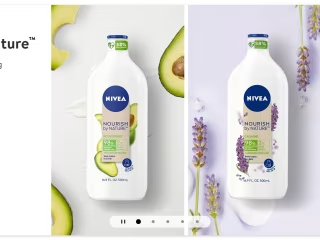Digital Publishing
We may receive a commission for purchases made through the links in this post. Learn more.
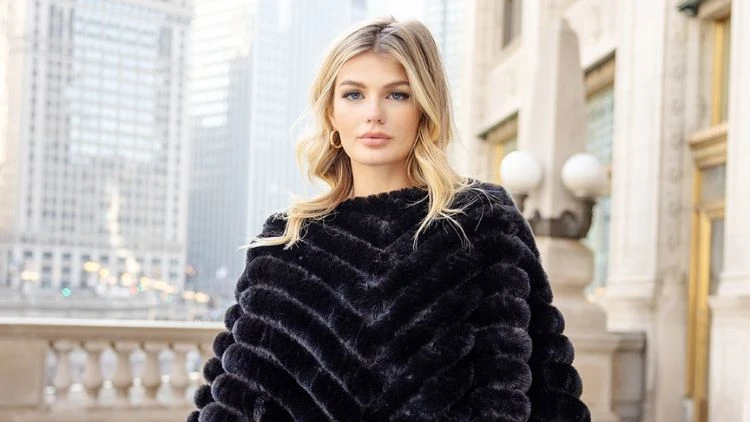
Faux fur is branded as an ethical, cruelty-free alternative to genuine fur. It is a type of fur that is made of petroleum-based fibers or plastic, combined with synthetic or animal-derived fabric as the backing. It is colored using synthetic dyes and is used to make coats, jackets, and other fashion accessories.
Faux fur has a cruelty-free manufacturing process. On the other hand, the process of obtaining genuine fur requires farming a wide variety of animal species for their fur. These include unethical animal farms and chemical-filled manufacturing processes.
Did you know that the global fur industry is worth over 40 billion dollars? But, as the truth behind the luxury fur coats is revealed, brands and consumers are more aware. The inhumane practices and factory farming have led to many brands banning the use of fur.
At the global level, some countries have enforced a total ban on fur products. England has banned fur breeding since 2000. The Netherlands is the second largest mink fur-producing country. It has also banned fur production since 2012.
Hence, faux fur emerged as a cruelty-free alternative. Using synthetic materials, faux fur replicates the look and feel of real fur. But, there is more to the process of manufacturing faux fur than what is indicated on clothing labels.
What Is Faux Fur Made From?
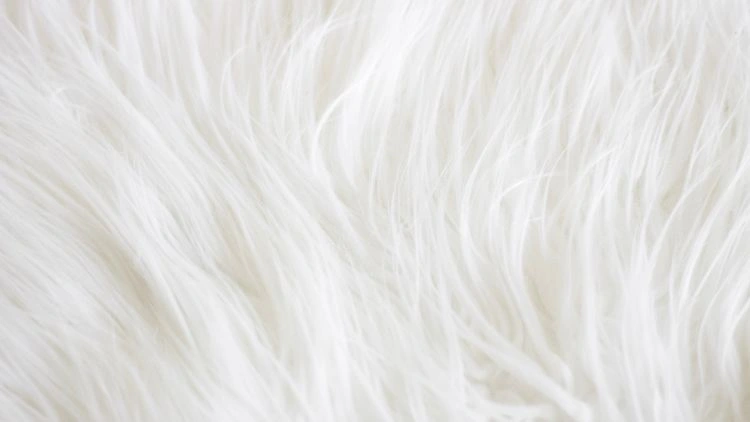
Currently, faux fur is majorly made of plastic fibers, synthetic fabric, and synthetic dyes. Faux fur was introduced into the fashion industry in 1929. The materials used back then were similar to real fur but were of lower quality.
Faux fur from previous decades had dull colors and did not replicate the feel of real fur. With recent technological advances, synthetic fibers were created. These helped faux first feel lighter and replicate the feel of real fur.
The raw materials that make up faux fur can be divided into primary and secondary. The primary raw material is plastic and is derived from fossil fuels such as petroleum. Synthetic fibers are created from these fossil fuel products. Some examples include acrylic and modacrylic fibers.
The secondary raw materials are the fabric that the synthetic fibers are attached to. This is needed as the back lining provides structural support to the fibers. Examples of fabric used include materials such as rayon, silk, wool, camlet, and cotton to name a few.
The final material used in the manufacture of faux fur is synthetic dyes. Silicones and resins can also be added to improve the look of the fibers. When brighter colors are needed, the dyeing process is repeated.
How Is Faux Fur Made?
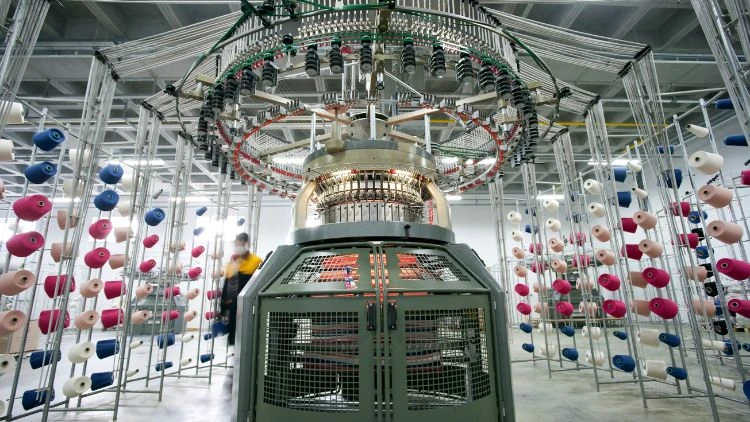
The manufacturing process of faux fur begins with the production of plastic fibers. The production starts from gathering raw materials to labeling and mass production. The manufacturing process can be broken down into these steps,
Procuring Raw Materials
The primary raw materials for faux fur are synthetic fibers. The most common ones are acrylic and modacrylic fibers. They are springy, lightweight, and produced from a process called polymerization.
These raw materials confer the properties of a fluffy look and feel to the faux fur. This production process is called dry spinning and requires a large amount of heat and energy.
Attaching The Fibres To The Fabric
The next component of faux fur is the fabric or lining. The synthetic fibers are knitted onto the fabric, which provides structural support. The fabric material can range from wool, silk, and rayon to any synthetic fabric.
The attachment of fibers to fabric is done in three methods. Weaving is one such process. In this, loops of fibers are created through and interlaced with the backing.
Tufting is another process that requires a tufting gun. Here, the thread is attached to the base and the tufting gun continues the process. This is faster compared to weaving.
The final method is knitting, which is similar to knitting mass-produced jerseys. It is the fastest and the most used process in the faux fur industry.
But, all these processes are energy intensive. The energy consumption throughout is much more compared to natural fibers and synthetic fibers.
Dyeing And Treatment Of Faux Fur
The faux fur is then dyed using synthetic dyes. Synthetic dyes are made of coal tar, a by-product of the fossil fuel industry. The dyeing process includes fiber, water, yarn, and chemicals such as fabric softeners.
Further, faux fur undergoes a finishing process known as shearing. It shrinks the fabric, gives the fibers a uniform length, and improves the stability of the fabric. Then, a wire comb is used to brush through the fabric and remove any loose fibers.
Labelling And Transport
The final process is the addition of a label indicating the materials used. Brands are legally obliged to have a label on faux fur, stating that they are imitation fur. The label must stay on throughout the lifecycle of the faux fur.
Faux fur is then subjected to a round of quality control prior to being shipped. Appearance, size, sewing quality, strength, and other qualities are out to test. Faux fur is then transported across the globe in airplanes and freight ships.
Is Faux Fur Vegan?
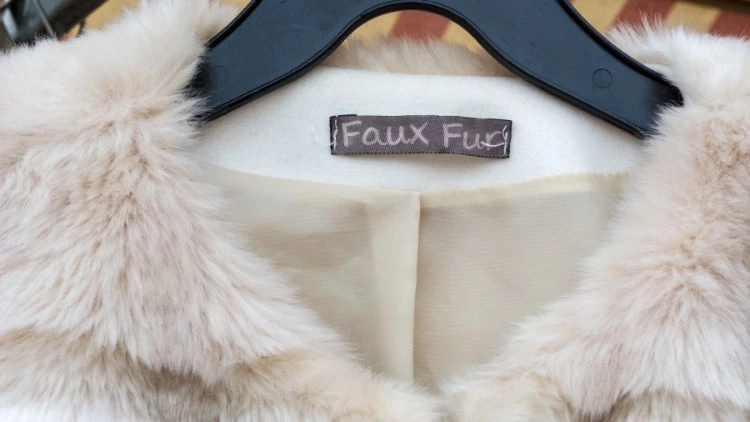
Faux fur is only vegan when the raw materials used are 100% animal free. The primary material for faux fur is plastic, attached to a lining of synthetic or animal-derived fabric such as wool, camlet, and silk. If the lining uses animal-based fabric instead of synthetic or natural then the faux fur is not vegan.
When any form of an animal-derived product is used in the manufacturing process, faux fur cannot be considered vegan. The primary raw material for faux fur is plastics such as acrylics and modacrylics that are used to make the ‘fur’ part.
Plastics are often coated with animal-based fat to maintain structure. Stearic acid in animal fat is used as a ‘slip agent’ to reduce friction and static. Glycerin derived from animal fats is also used as a plasticizer to lubricate the plastic.
The secondary raw material is the backing onto which the hair is woven or knitted. This backing can include materials such as rayon, silk, wool, camlet, and animal skin among others.
Wool contained in faux fur is obtained from sheep and other animals. Some examples include cashmere from sheep and angora from rabbits. This is obtained in a very unethical manner, from animals held in dilapidated conditions.
Camlet is also a common backing fabric found in faux fur. This is woven fabric obtained from camel or goat hair. Silk is another example, composed of fibroin. It is produced by certain insect larvae to form cocoons.
The manufacturing process of real fur garments involves the unethical treatment of animals for their fur. While faux fur may be a cruelty-free alternative, it is not vegan. The manufacturing process may incorporate animal-based materials at any stage. For it to be a vegan product, it would have to be 100% animal free.
Is Faux Fur Sustainable?
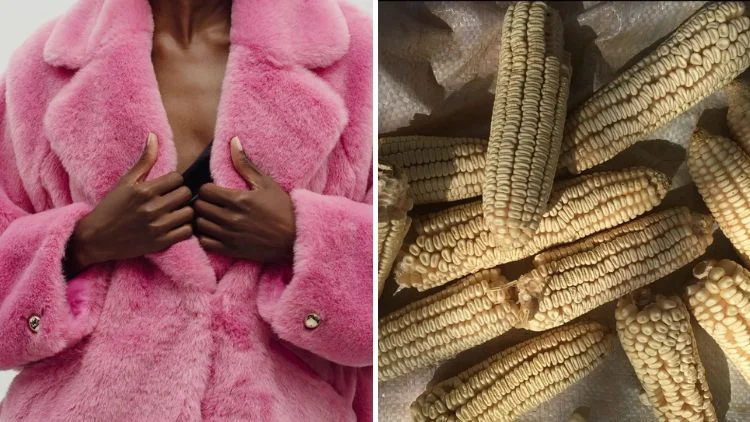
Sustainable KOBA fur by Ecopel
Faux fur is a more sustainable alternative to animal fur. But synthetic faux fur is in itself not a sustainable material. If you are looking for sustainable faux fur, opt for products that use recycled synthetic fibers or natural fibers.
The manufacturing process of synthetic fur involves the use of chemicals that pollute the environment. The materials do break down eventually, but take many years to do so. The synthetic fibers release microplastics in the process of breaking down. This may pollute land, and water bodies and may end up being consumed by animals and humans over time.
There are some strategies to minimize the impact of faux fur on the environment. Faux fur is reused in some cases to prolong the life of the fabric as long as possible. You can also mechanically recycle acrylic fiber by re-melting or re-dissolving it.
The main problem with synthetic faux fur is that the fabric cannot be reused. Rather, it is recycled and repurposed to create newer products. Regenerated fiber or rags are some options to prolong the lifecycle of the fabrics used.
Hence, the only way to make faux fur more sustainable is by rethinking the raw materials that make it up. Using natural fibers and fabrics can make the product more eco-friendly by reducing waste. Options such as these can also reduce the energy and chemicals used in the process.
A good example of innovative eco-friendly faux fur is KOBA fur – vegan fur that uses 100% biodegradable fabrics. Other good sustainable fur invitations involve the use of hemp, cotton, and other plant-based materials.
Is Faux Fur A Good Material?
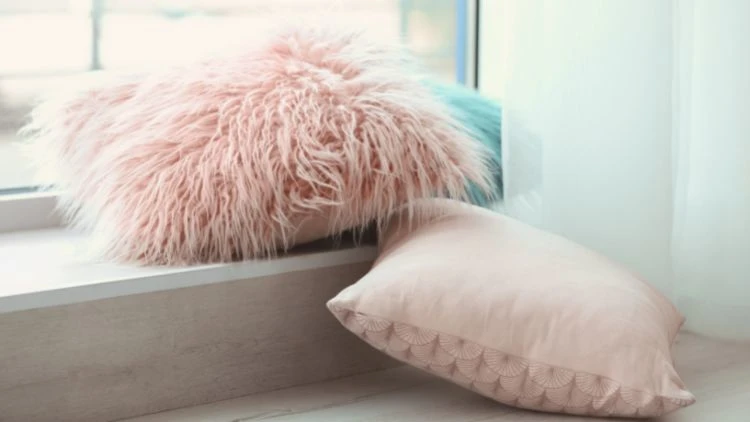
Faux fur is a good, cruelty-free alternative to real leather. But in the long run, faux fur is not the best material as it can be non-sustainable, non-biodegradable, and less durable.
Brands often market faux fur as an eco-friendly alternative to real fur. In reality, the harm caused by the manufacture of faux fur is significant. The energy and chemicals used throughout the manufacturing process are unsustainable.
The plastic fibers for faux fur are derived from the by-products of fossil fuels. Turning petrochemicals into these fabrics requires a process called polymerization. This is a chemical-filled, energy-intensive process.
Acrylic and modacrylic fibers consist of co-polymers such as vinyl chloride and acrylonitrile. These are carcinogens and have an impact on the human nervous system. These harmful chemicals are spun into thread and trapped within the fibers.
When made into clothes or fabric, it can be inhaled or absorbed by the human body through skin contact. Further, the plastic used in faux fur releases microplastics throughout its life cycle. Microplastics are tiny, less than 5mm plastic that is invisible to the human eye.
These are present throughout the process of manufacture and usage of faux fur. Did you know that an average of 1,174 milligrams of microfibres are produced from a single wash of a faux fur jacket?
Faux fur also sheds through wear and tear. This makes it a source of microfibres that can affect human beings. Consumers inhale and come in contact with microfibers extensively. This has long-term effects of disrupting human health.
Even though the plastic in faux fur is reusable, there is a limit to the number of times. After a point, neither the fabric nor the plastic is usable again. That is the materials of faux fur enter and decay in landfills.
They do not naturally decompose and take years of breaking down to release more microplastics. These microplastics re-enter the air, water, and environment. They eventually enter the animal and human bloodstream, disrupting their health.
Faux fur is also made from recycled plastic. This may seem to contribute to a sustainable lifestyle. But, the process of releasing chemicals and microplastics remains the same.
Hence, faux fur does not meet the standards of good material for the environment, and for the consumer. When a material is sustainable, ethical, eco-friendly, and does not harm consumer health, it can be considered a good material.
How Long Does Faux Fur Last?
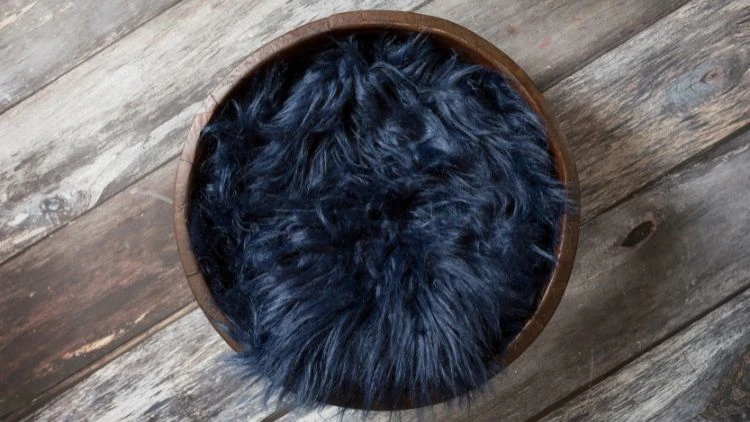
The longevity of faux fur depends on factors from the brand, and the consumer. Depending on the quality, a good quality faux fur coat or fashion product can last up to 10 years with regular maintenance. A cheap quality fur coat may last a maximum of 3-5 years.
The quality of the materials used plays a key role in the product life of the faux material. From the consumer’s end, the maintenance of the material decides how long the piece of clothing lasts.
In comparison, a real fur coat lasts for 30 years or more. This also depends on the type of fur used. Some animals provide durable furs, and some fur products are softer and fragile.
The maintenance of faux fur requires regular cleaning and washing. The fur is to be brushed through to prevent tangling. This can extend the life cycle of faux fur.
But, eventually, the materials of faux fur degrade over time. Plastic, the main raw material, does not degrade for about 500 years. This adds to why it is not an environmentally friendly product.
Hence, faux fur as a product may last for 10-15 years. But the raw materials last for centuries with slow degradation.
How To Maintain Faux Fur?

Compared to everyday fabrics and garments, faux fur may need extra care. Caring for your faux coats or garments can extend the lifespan of the faux fur garment. Key tips for maintaining faux fur include the right storage, washing, and cleaning.
Given that faux fur is not biodegradable, caring for it is important. Proper maintenance also has other benefits. It maintains the intended look, the fluffy quality of the faux fur, and the bright colors.
The process of maintaining faux fur is different compared to real fur. Some ways to maintain your faux fur include,
Storage
The storage of faux fur is not as stringent as real fur. It is important to store faux fur in a dry place, away from humidity. Humidity can make the fur frizz and lose its sheen.
Faux fur should also be stored away from areas of direct sunlight. Overexposure to sunlight can discolor the fur fabric and ruin the appearance of the fur fibers. It is recommended to pack the faux fur clothing in a garment bag before storage.
Regular Maintenance Of The Fur
If faux fur garments are worn often, maintaining the fur is important. A soft-bristled brush is used to brush the fur. This removes any surface-level dirt and avoids clumps or matting of the fibers.
This can be done whenever necessary or once a week. This can keep the faux material looking neat for longer without having to wash it.
Spot Cleaning
In case of stains or certain spots that need cleaning, spot cleaning is used. The requirements include a washcloth, gentle detergent, and warm water. Dip the washcloth in warm water with detergent.
Scrubbing the washcloth together can agitate the soap. It is advised to not drop detergent directly onto the stain. After scrubbing, use the soapy spot on the stain and rub in circles to gradually decrease the stain.
Once the stain is removed, use a wet part of the same cloth to remove any leftover detergent. The faux material can then be left to air dry.
Machine Washing
It is recommended to check the label of the faux fur garment prior to machine washing. Most faux fabrics can be machine-washed.
The garment must be tossed inside out to reduce friction on the fur fabrics. The settings for the water must be cool/cold and gentle detergent must be used. The entire process must have minimal heat, as heat can destroy the fabric.
Using the dryer on faux fur is not recommended. Doing so will result in clumpy and matted faux fur, which cannot be removed by any method of untangling. Air drying your faux garment is a must after machine washing.
Hand Wash
Handwashing is also done to clean faux fur. In a bucket of warm water and mild detergent, the faux fur clothing is agitated for 10-15 minutes. To remove the water, drain and rinse, followed by rolling up the material in a towel.
This removes additional moisture. The garment can then be air dried. In case of any tangling or matting, a gentle brush is used to untangle the fur.
Wearing
Faux fur is sensitive to rain, snow, and humidity. The exposure won’t immediately ruin it. But, as the duration of exposure increases, faux fur might get ruined. This is due to the fabric used in faux fur.
In the case of real fur, the fabric or lining used is leather. This prevents the water from seeping in and ruining the lining. Animal fur also contains keratin, which is naturally waterproof.
Increased exposure of the faux material to humidity can cause frizzing of the fur. In such cases, brushing the faux fur out with a soft bristle brush before storing the material can help.
Is Faux Fur Real Or Fake?

Faux leather or imitation leather is a synthetic alternative to real leather. The word ‘faux’ is derived from French, which means fake. Faux fur is not made of the same materials as real fur and is instead made of plastic. Hence, faux fur is fake.
Faux fur is also called imitation leather as it aims to imitate the look and feel of real leather. This wasn’t the case in previous decades. The materials used were of low quality or were a mix of synthetic and animal-based materials.
With new technology, faux fur mimics real leather more than ever. It is designed to look that way and is a cruelty-free alternative. Real fur uses animal skin and hair, obtained as raw materials from unethical animal farms.
Real fur uses the hair of mammals as an insulating sheath while creating jackets, coats, or other fashion accessories. Once the fur is harvested, it is treated with chemicals to prevent decomposing. This helps them stay intact.
This intact fur is then woven onto fabrics to create a variety of fashion clothing. The cost of real fur is also very high, depending on the quality and the amount of fur used.
Faux fur does not have the same raw materials. Instead, it uses plastic, which is readily available. The process of manufacture is also animal cruelty-free.
The raw materials are processed and treated to look like genuine fur. The blend of plastic fibers is man-made and can be manufactured in any color or shape. It is also more affordable and easier to care for.
Hence, faux fur is fake. The raw materials used in faux and real fur are not the same. They may look very similar. But, there are differences in the cost, texture, production, manufacturing, and durability of the material.
How To Tell The Difference Between Real Fur And Faux Fur?

Faux fur is made of synthetic materials that are designed to mimic the feel of real fur. Real fur uses genuine animal hair.
The main difference between real fur and faux fur is the source of the raw materials. The manufacturing process and duration also differ. Besides that, factors such as durability, cost, availability, and physical characteristics are considered.
It is then processed and manufactured into coats, blankets, jackets, and other fashion accessories. Some of the qualities that help distinguish faux fur from real fur include,
Durability
Faux fur is relatively more durable and does not require expensive cleaning and maintenance. Faux fur can be washed in the comfort of home. Real fur requires product-specific cleaning agents, such as dry cleaners that specialize in animal fur.
Storage
Faux fur needs to be stored in a moisture-free place, away from sunlight. Genuine fur requires precise conditions to be stored. Real fur needs to be stored in an airy, cool, dark place, in a climate-controlled storage unit.
Brand
The brand behind the material of clothing and its policies is an indicator of whether the item of clothing is faux fur or real fur. Some brands use faux fur and mention the same, while some market faux fur as vegan fur. Luxury brands such as Stella McCartney have lines of vegan, cruelty-free options.
Label
The label attached with the clothing item mentions the material, and the preferred method to wash. However, this is not completely reliable as some labels may be misleading. They may interchange terms such as vegan and faux fur.
In such cases, having some prior knowledge of industry-specific aspects is needed. Knowing what vegan fur is, and the common materials used for faux fur can help when labels are difficult to decipher.
Material And Base Fabric
Genuine fur is extremely soft to the touch, and faux fur may not replicate the exact same feel. Faux fur may feel more coarse. With recent developments, faux fur is incorporating newer materials to replicate the same feel.
The base of faux fur uses cotton, wool, silk, and other synthetic fabric. With genuine fur, the base material of the garment is leather or animal skin. This backing helps distinguish between real and faux fur.
Hair Tips
Faux fur has a knitted base to which the hair is knit onto. The hair tips are blunt and end abruptly. Real fur, on the other hand, will have natural hair attached to its leather base. The hair tips taper at the end as natural hair does.
Pushing A Pin To Test Fabric
Using a pin, one can check to stick it through the faux fur. It easily passes through, due to the knitted base. The pin does not pass through real fur easily due to the thicker leather base present.
Water Repellent Properties
Genuine fur repels rainwater to a certain extent and is dependent on the type of fur it is made of. Fur that has a larger content of keratin is seen in coats made of beaver, mink, and sable hair. Genuine fur can handle rainwater in reasonable amounts but will be damaged if it is soaked in water.
Faux fur is made of a cloth or fabric backing. This does not confer any water-repellent properties. While a mild wash is tolerable, large amounts of water may lead to moisture seeping into the coat fabric. This can ruin the lining, loosen the fibers, and ultimately decrease the quality of the coat.
Cost
There are many factors that determine the cost of real or faux fur. Of these, quality plays a key role. The quality of raw materials used, the quantity and the manufacturing cost contribute to the overall cost.
Further, the fur type and garment that it is used for, the fur color and shade also affect the cost. The price of real fur can extend up to $900 and more based on the quality. Faux fur is relatively cheaper.
The most basic faux fur is available at $15-25 a yard. The price may increase as the quality increases. Even at the highest quality, faux fur does not cost as much as real fur.
Due to the technical advances in recent years, faux fur has evolved to resemble the aesthetic of real fur. But, there are some major characteristics that faux fur cannot replicate. These properties are used to differentiate between fake fur and real fur.
Summary
Even though faux fur is a better alternative as it is cruelty-free, the benefits do not outweigh the harm. While it is marketed as a planet-friendly alternative, it is far from the truth. An extensive amount of energy, chemicals, and resources are used to make faux fur.
Brands and consumers must rethink before supporting faux fur purchases. The number of resources used is ultimately harmful to the environment. They are also colossal compared to the amount of fabric produced.
The lifecycle of faux fur is also dependent on the consumer. Many unaware consumers are led to believe that faux fur is eco-friendly. This can lead to improper maintenance and increased disposal of faux fur materials.
Instead, maintaining and extending the lifespan of faux fur materials can reduce the amount of plastic pollution. There is a need to plan alternatives to faux fur that are eco-friendly and sustainable.
Vegan fur made from organic materials is a sustainable alternative to faux fur. Currently, some brands produce it in small quantities. Brands are also investing in the research and development of new vegan raw materials.
There are innovative biodegradable vegan fur ideas being tried and tested in the fashion industry. This may be the start of more sustainable fashion industry and lifestyle. Mass-producing such vegan fur can make it more affordable and available to consumers.
See also: Vegan Fur Alternatives
Main Image: courtesy of Donna Salyers Fabulous Furs

Like this project
Posted Aug 18, 2023
SEO-optimized informative article on Faux Fur and its rise as a vegan alternative.






